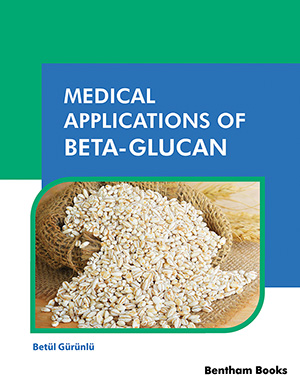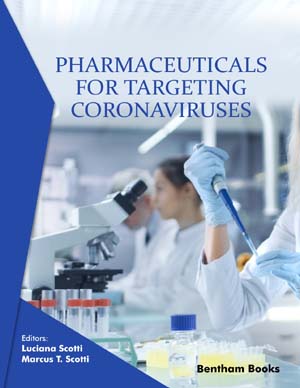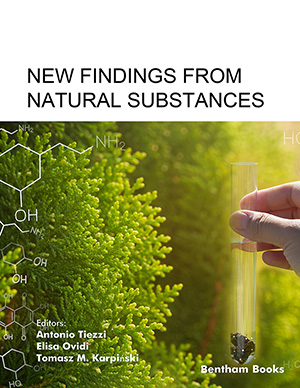Preface
Page: i-ii (2)
Author: Sachin Kumar Jain, Ram Kumar Sahu, Priyanka Soni, Vishal Soni and Shiv Shankar Shukla
DOI: 10.2174/9789815079845123010001
Hepatotoxicity
Page: 1-18 (18)
Author: Abu Md Ashif Ikbal, Parikshit Das, Saket Singh Chandel*, Deepshikha Verma and Paromita Dutta Choudhury
DOI: 10.2174/9789815079845123010003
PDF Price: $15
Abstract
The largest organ in the human body is the liver which captures 2 to 3% of
the human body weight, located on the right side of the anterior quadrant in the
abdomen and below the anterior hemidiaphragm ribcage. It performs various important
functions such as digestion of food, protein production, fluid production, detoxification
of waste, etc. Liver injury known as liver trauma can be categorized into four types:
hepatocellular, autoimmune, cholestatic and infiltrative. Drug-induced liver injury can
match with any form of acute or chronic liver injury. Acute injury to the liver is mainly
due to the action of cytochrome P450, which disintegrates drugs into electrophiles or
free radicals; these reactive metabolites can covalently act on protein and unsaturated
fatty acids for induction of lipid peroxidation which leads to calcium homeostasis or
death. Toxicology of the liver is a complex concept that entails either concurrent as
well as sequential events. These events determine the pathways, severity and effects of
liver injury. Pharmacogenetics has made great progress in current years which indicates
the creation of refined algorithms that take drug, host and environmental risk variables
into account, allowing for the selection of better medicine based on accurate risk-benefit ratio calculations. In this chapter, we will discuss the anatomy, functions of the
liver, types of liver injury, risk factors, and various treatment strategies for the
treatment of liver diseases.
Hepatoprotective Role of Medicinal Plants
Page: 19-43 (25)
Author: Bedanta Bhattacharjee, Tirna Paul, Retno Widyowati, Ram Kumar Sahu* and Monika Kaurav
DOI: 10.2174/9789815079845123010004
PDF Price: $15
Abstract
With its ability to self-regenerate, the liver is considered an important gland
in the human body, performing essential functions such as the production of vital
proteins, lipids, lipoproteins, glucose homeostasis as well as the production and
secretion of vitamin stores and bile acids. Therefore, any impairment of the organ can
lead to serious problems in our bodies. There are various forms of disorders associated
with an unhealthy liver, which affect the liver in different ways and can be detected by
observing various general symptoms and some specific diagnostic tests. To treat and
control these hazardous effects on our bodies, various medicines are available in the
market that are mainly derived from plants and plant products. As they have fewer side
effects, herbal medicines have attracted much attention for alleviating various liver
diseases while maintaining a healthy lifestyle. Moreover, nanobased delivery of natural
products shows higher hepatoprotective activity than crude extracts. In this chapter,
various hepatoprotective functions of medicinal plants and their nano-based drug
delivery have been highlighted.
Bioactive Compounds from Plants Having Hepatoprotective Activity
Page: 44-80 (37)
Author: Retno Widyowati*, Rosita Handayani and Ram Kumar Sahu
DOI: 10.2174/9789815079845123010005
PDF Price: $15
Abstract
The liver plays an essential role in metabolic management, and
detoxification associating the metabolisms of toxins, lipids, alcohols, carbohydrates
and various drugs. It also plays a role in the immune response. However, some
conditions, such as viral infections (hepatitis), inflammation, continuous liquor
consumption, periodic use of antibiotic-related drugs, and non-alcoholic fatty liver
illness, can produce free radicals and cytokines, enhance lipid peroxidation, and induce
damage to hepatocytes. Hepatoprotective agents are often the treatment of choice to
improve liver function and protect the liver from exposure to harmful compounds.
Based on scientific reports, Silybum marianum, Moringa oleifera, Garcinia
mangostana, Glycyrrhiza glabra, Mangifera indica, Amaranthus spinosus,
Andrographis paniculata, Phyllanthus species (amarus, niruri, emblica), Curcuma
species (longa, xanthorrhiza, manga), and Citrus species (aurantium, sinensis, unshiu,
grandis) have been broadly administered for the liver ailments therapy through
antioxidant-associated abilities. Impressive studies have exposed that the health-promoting outcomes of bioactive constituents derived from plants have often been
applied to their antioxidant characteristics and raise the cellular antioxidant protection
system, scavenge free radicals, suppress lipid peroxidation, stimulate anti-inflammatory
capacity, and assure the liver from destruction. These compounds are chlorogenic acid,
curcumin, quercetin, hesperidin, rutin, betalains, apigenin, silymarin, phyllanthin,
mangiferin, α-mangostin, bellidifolin, ginsenosides, glycyrrhizin, lycopene, and
andrographolide.
Hepatoprotective Role of Herbs and Herbal Formulations
Page: 81-114 (34)
Author: Neetesh Kumar Jain* and Nitu Singh
DOI: 10.2174/9789815079845123010006
PDF Price: $15
Abstract
The liver is an important organ in the body's metabolism and excretory
system. The prevalence of many forms of hepatic illnesses is on the rise, resulting in a
major increase in morbidity and mortality worldwide. Viral hepatitis, alcoholic/non-alcoholic fatty liver disease, liver fibrosis, cirrhosis, hepatocellular cancer, and drug-induced liver injury are all important health concerns that take millions of lives each
year throughout the world. Pharmaceutical medications are frequently linked to liver
injury, and so have limited efficacy in the treatment of liver diseases. As a result,
herbal drugs have grown in popularity and are widely used. For a long time, herbal
remedies have been utilized to treat liver problems. There are a variety of herbal
preparations on the market. Herbal medicine has been used to treat liver disorders for
thousands of years. A large range of medicinal plants have been examined as
hepatoprotective agents in preclinical and clinical investigations. However, more
thorough research is needed to screen and evaluate the usage of herbal medicines in the
treatment of diverse liver illnesses. The goal of this review is to compile information on
promising medicinal plants that have been tested in hepatotoxicity models using
cutting-edge scientific methods. The damage to liver cells caused by various toxic
chemicals (antibiotics, chemotherapeutic agents, carbon tetrachloride (CCl4
),
thioacetamide (TAA), and microbes have been well studied. In this scenario, the
current synthetic medications to treat liver problems promote more liver damage. The
purpose of this chapter is to examine various hepatoprotective plants and herbal
formulations.
Regulatory Affairs in Herbal Products
Page: 115-133 (19)
Author: Megha Jha*, Dolly Rani and Kavita Chahal
DOI: 10.2174/9789815079845123010007
PDF Price: $15
Abstract
Various parameters/guidelines regulating the safety and efficacy of herbal
pharmaceuticals, as well as their manufacturing and distribution, have been strongly
implemented by regulatory bodies. To understand the pre-marketing requirements, the
legislative status of herbal drugs/products was analyzed in this chapter for various
countries in Southeast Asia, Africa, America, Europe, and Austria. Apart from the
challenges of herb availability and conservation, it has been shown that there is a lack
of harmony in the regulatory requirements for herbal products across the world. A
critical evaluation was performed in order to detect the obstacles in the harmonization
of herbal products. The worldwide trade and development of herbal products are being
hampered by these issues. The herbal drug industry is inadequately regulated in most
countries, and herbal medicines are often neither registered nor controlled. Quality
compliance and assurance of the safety and efficacy of the marketed herbal drugs are
major issues faced by developing as well as developed countries across the globe. The
problem arises when herbal medication is utilized without legitimate permission, or in
huge dosages, or in combination with other drugs for a longer period, or without
discussion with a doctor, and produced properly. Taking these factors into account, the
World Health Organization's International Drug Monitoring Program (WHO) has
published standards for herbal assessment and quality control testing in order to
improve the safety and efficacy of herbal-based therapeutics. This chapter covers the
importance of regulatory affairs to be used in the processing of herbs and herbal
products, and a comparative study of regulatory situations in different countries
Hepatoprotective Effects of Edible Plants and Spices
Page: 134-153 (20)
Author: Raja Chakraborty* and Saikat Sen
DOI: 10.2174/9789815079845123010008
PDF Price: $15
Abstract
Liver diseases are considered a major global public health problem that is
always underestimated. Damage to hepatocytes caused by drugs, toxins, viruses, etc. is
a major cause of hepatic disorders, including liver cancer. Oxidative stress is
considered a primary underlying mechanism of liver disorders. Cytokine produced in
response to ROS plays an important role in damaging the liver. Plants are also
considered an important source of phytoconstituents with hepatoprotective activity. As
part of the diet, edible plants could play an important role in protecting the liver from
injury caused by oxidative stress, microorganisms, or other exogenous substances.
Many vegetables, fruits, and spices have been investigated for their hepatoprotective
activity in pre-clinical studies. Phytoconstituents like curcumin, catechin, rutin,
myristicin, fumaric acid, silybin, picroside, kutkoside, glycyrrhizin, silymarin, and
apigenin were found to exhibit hepatoprotective and antioxidant activity through
diverse mechanisms including antioxidant activity, and anti-inflammatory activity. This
chapter highlighted edible plants with hepatoprotective activity.
Hepatoprotective Phytochemicals: Isolation and Characterization from Plant Extracts
Page: 154-180 (27)
Author: Biresh Kumar Sarkar*, Dhrubajyoti Sarkar, Faruk Alam and Durgaprasad Kemisetti
DOI: 10.2174/9789815079845123010009
PDF Price: $15
Abstract
The liver is the body's primary organ responsible for metabolism and
excretion. Oxidation, reduction, hydration, condensation, hydrolysis, conjugation, and
isomerization are some of the metabolic routes used by the human liver to metabolise
chemicals. Any of the aforementioned processes can be disrupted, resulting in liver cell
damage or hepatotoxicity, which can lead to a variety of disorders. These disorders are
linked to increased death rates over the world. Medicines, chemicals, dietary changes,
and herb-induced liver injury via hepatotoxins can all cause hepatotoxicity. A number
of herbal and herbomineral preparations are available in Ayurveda, the traditional
Indian Medicine, which has been investigated for their hepatoprotective potential to
treat different types of liver disorders. The present review is focused on different herbal
plants that have the potential to cure hepatotoxicity.
Subject Index
Page: 181-185 (5)
Author: Sachin Kumar Jain, Ram Kumar Sahu, Priyanka Soni, Vishal Soni and Shiv Shankar Shukla
DOI: 10.2174/9789815079845123010010
Introduction
Plant-derived Hepatoprotective Drugs is a comprehensive guide that explores the world of medicinal plants and their hepatoprotective properties, offering both basic and applied insights for scholars and hepatology residents. Structured chapters provide a deep dive into the subject, while referencing relevant research and future perspectives. Readers will learn the science behind hepatotoxicity and the role of plants in safeguarding liver health. The book also helps researchers to explore bioactive compounds extracted from plants, along with herbal formulations that contribute to hepatoprotection, and conveys an understanding of the effects of edible plants and spices on liver wellness. A chapter focusing on isolation and characterization of phytochemicals bridges theory and application for discovering and developing hepatoprotective biopharmaceuticals. Key Features: Gives a thorough understanding of hepatotoxicity and related bioactive compounds Comprehensive references to enhance understanding Well-structured chapters providing organized knowledge Basic and applied information for diverse readers Future perspectives offering a glimpse into ongoing research This is an ideal reference for pharmacology scholars and residents in hepatology, as well as readers interested in nature's potential in promoting liver health.






















